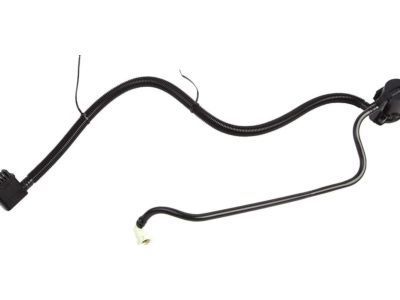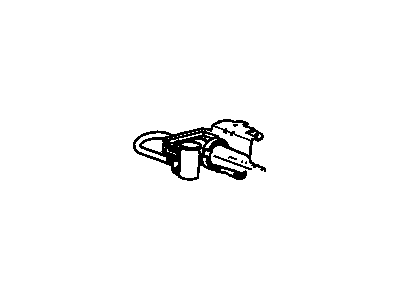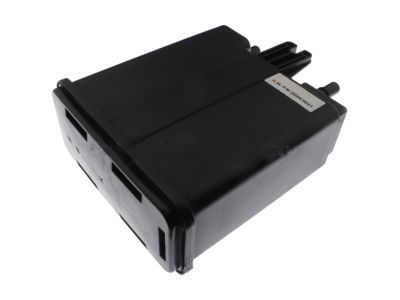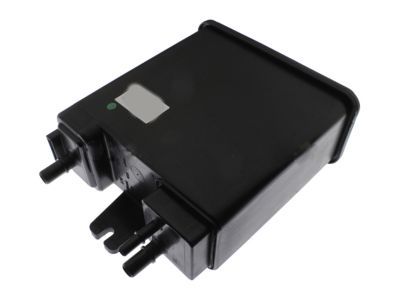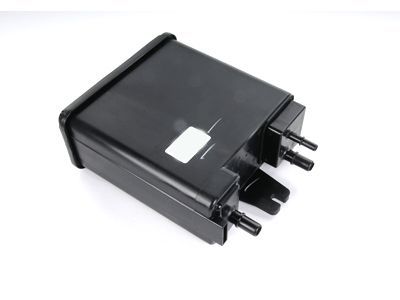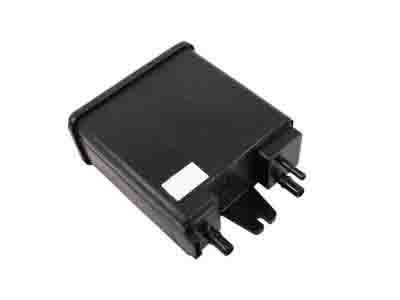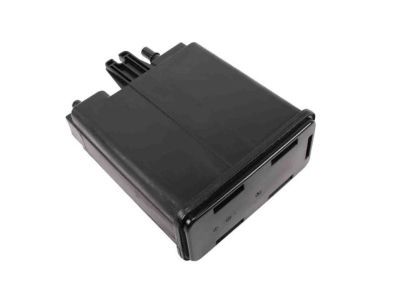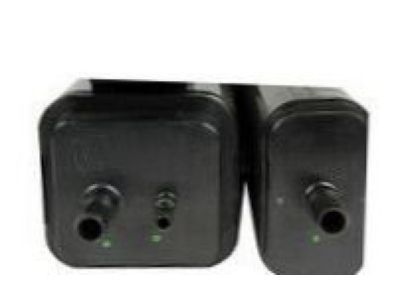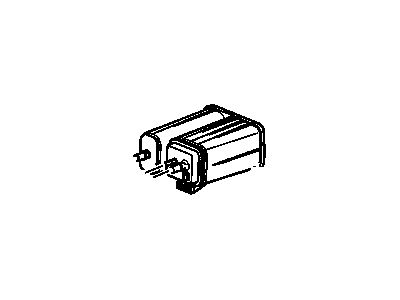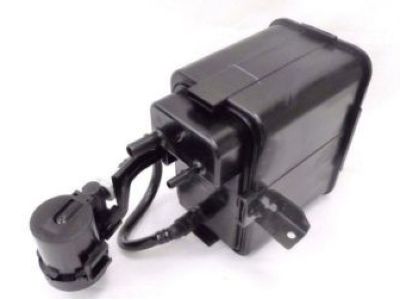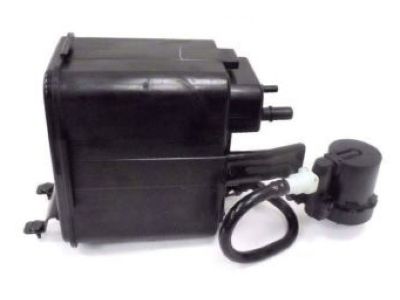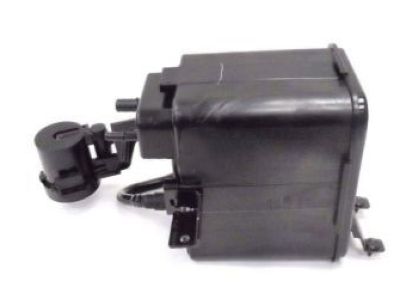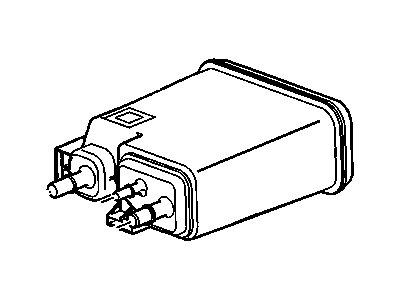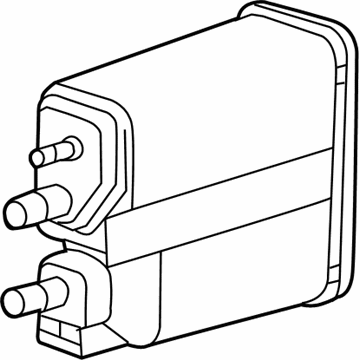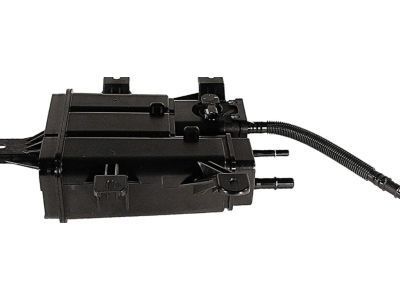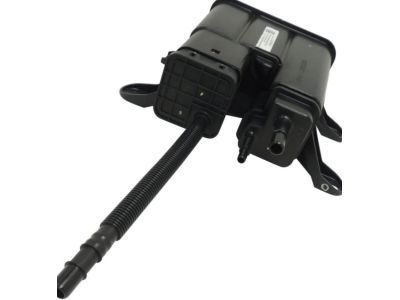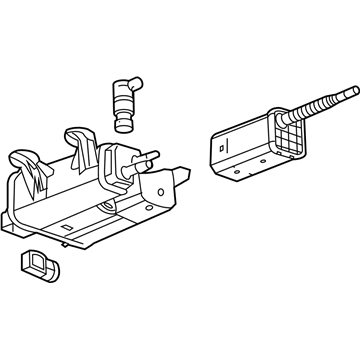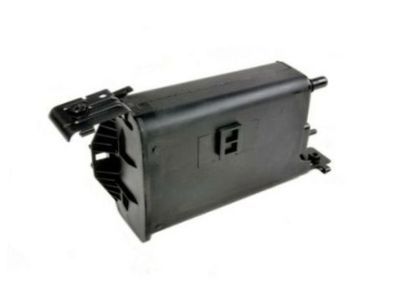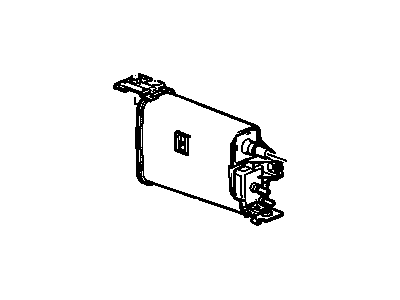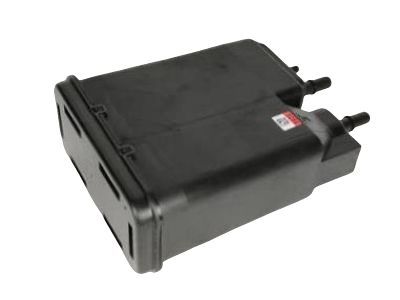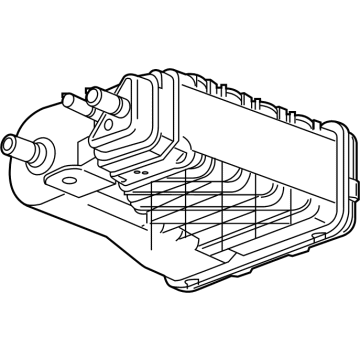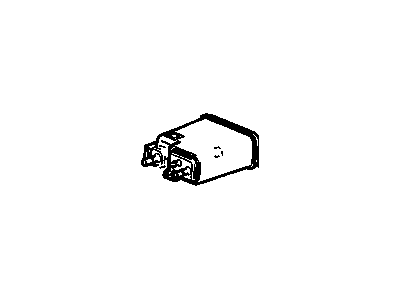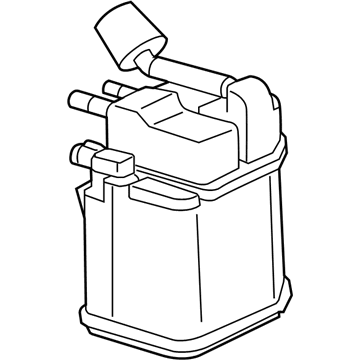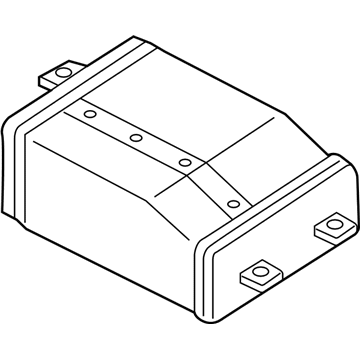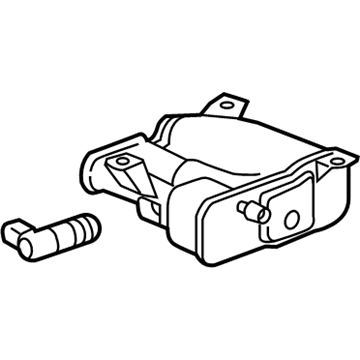
My Garage
My Account
Cart
Genuine Chevrolet Vapor Canister
Fuel Vapor Canister- Select Vehicle by Model
- Select Vehicle by VIN
Select Vehicle by Model
orMake
Model
Year
Select Vehicle by VIN
For the most accurate results, select vehicle by your VIN (Vehicle Identification Number).
181 Vapor Canisters found
Chevrolet Vent Assembly, Evap Emission Canister
Part Number: 23481275$55.97 MSRP: $114.18You Save: $58.21 (51%)Ships in 1-2 Business DaysProduct Specifications- Other Name: VENT, Evaporation Emission System(Fuel Tank End)
- Replaces: 15286109, 15286148, 15893884, 15286149, 15844700, 20995471, 25962085, 25962086, 15286150, 20995472, 25887005, 15844699, 25932566
Chevrolet Canister Assembly, Evap Emission
Part Number: 22963841$178.24 MSRP: $360.44You Save: $182.20 (51%)Ships in 1-2 Business DaysProduct Specifications- Other Name: CANISTER, Fuel Tank Evaporator/Purge Control; Vapor Canister
- Replaces: 12573649
Chevrolet Canister Assembly, Evap Emission (W/O Vent Valve So)
Part Number: 15136019$174.59 MSRP: $356.16You Save: $181.57 (51%)Ships in 1-2 Business DaysProduct Specifications- Other Name: CANISTER, Fuel Tank Evaporator/Purge Control; Vapor Canister
Chevrolet Canister Assembly, Evap Emission
Part Number: 15112165$193.14 MSRP: $394.00You Save: $200.86 (51%)Ships in 1-2 Business DaysProduct Specifications- Other Name: CANISTER, Fuel Tank Evaporator/Purge Control; Vapor Canister
Chevrolet Canister Assembly, Evap Emission
Part Number: 84106546$162.01 MSRP: $339.41You Save: $177.40 (53%)Product Specifications- Other Name: CANISTER, Fuel Tank Evaporator/Purge Control; Vapor Canister
Chevrolet Canister Assembly, Evap Emission
Part Number: 23156464$206.70 MSRP: $390.00You Save: $183.30 (47%)Ships in 1-2 Business DaysProduct Specifications- Other Name: CANISTER, Fuel Tank Evaporator/Purge Control; Vapor Canister
- Replaces: 15929484, 20924748, 20842715, 22758497
Chevrolet Canister,Evap Emission
Part Number: 15733604$168.37 MSRP: $343.46You Save: $175.09 (51%)Ships in 1-2 Business DaysProduct Specifications- Other Name: CANISTER, Fuel Tank Evaporator/Purge Control; Vapor Canister
Chevrolet Canister Assembly, Evap Emission
Part Number: 25937605$180.32 MSRP: $327.86You Save: $147.54 (45%)Ships in 1-2 Business DaysProduct Specifications- Other Name: CANISTER, Fuel Tank Evaporator/Purge Control; Vapor Canister
- Product Specifications
- Other Name: Vapor Canister
- Replaces: 84050713
Chevrolet CANISTER ASM-EVAP EMIS
Part Number: 85158838$165.00 MSRP: $345.70You Save: $180.70 (53%)Ships in 1-2 Business DaysProduct Specifications- Other Name: Vapor Canister
- Replaces: 84207755, 84824668
Chevrolet Canister Assembly, Evap Emission
Part Number: 84106544$162.01 MSRP: $339.41You Save: $177.40 (53%)Ships in 1-2 Business DaysProduct Specifications- Other Name: CANISTER, Fuel Tank Evaporator/Purge Control; Vapor Canister
Chevrolet Canister Assembly, Evap Emis
Part Number: 84325521$152.55 MSRP: $311.22You Save: $158.67 (51%)Ships in 1-2 Business DaysProduct Specifications- Other Name: Vapor Canister
Chevrolet CANISTER ASM-EVAP EMIS
Part Number: 85572069$165.00 MSRP: $345.69You Save: $180.69 (53%)Ships in 1-3 Business DaysProduct Specifications- Other Name: Vapor Canister
- Replaces: 23509378, 84871620, 84180451, 84125842
Chevrolet Canister Assembly, Evap Emission
Part Number: 15130738$189.11 MSRP: $351.36You Save: $162.25 (47%)Ships in 1-2 Business DaysProduct Specifications- Other Name: CANISTER, Fuel Tank Evaporator/Purge Control; Vapor Canister
- Replaces: 17113676, 17113539
Chevrolet CANISTER-EVAP EMIS
Part Number: 85528019$169.83 MSRP: $275.68You Save: $105.85 (39%)Ships in 1-3 Business DaysProduct Specifications- Other Name: Vapor Canister
- Replaces: 84065746, 84835953
Chevrolet CANISTER ASM-EVAP EMIS
Part Number: 85158843$163.92 MSRP: $334.40You Save: $170.48 (51%)Ships in 1-3 Business DaysProduct Specifications- Other Name: Vapor Canister
- Replaces: 84824671, 84652287
Chevrolet Canister Assembly, Evap Emission
Part Number: 84106550$123.36 MSRP: $358.26You Save: $234.90 (66%)Ships in 1-2 Business DaysProduct Specifications- Other Name: CANISTER, Fuel Tank Evaporator/Purge Control; Vapor Canister
Chevrolet CANISTER ASM-EVAP EMIS
Part Number: 42782039$159.30 MSRP: $287.03You Save: $127.73 (45%)Ships in 1-2 Business DaysProduct Specifications- Other Name: Vapor Canister
- Replaces: 95128163
Chevrolet Canister,Evap Emission
Part Number: 19316229$184.29 MSRP: $427.34You Save: $243.05 (57%)Ships in 1-2 Business DaysProduct Specifications- Other Name: CANISTER, Fuel Tank Evaporator/Purge Control; Vapor Canister
Chevrolet CANISTER ASM-EVAP EMIS
Part Number: 85123397$177.00 MSRP: $370.84You Save: $193.84 (53%)Ships in 1-2 Business DaysProduct Specifications- Other Name: Fuel Tank, Vapor Canister
- Replaces: 84403786, 84823733
| Page 1 of 10 |Next >
1-20 of 181 Results
Chevrolet Vapor Canister
At GMPartsGiant.com, we offer an extensive inventory of genuine Chevrolet Vapor Canisters at competitive prices in the market. All our OEM Chevrolet Vapor Canisters are backed by the manufacturer's warranty and will be shipped promptly to your doorstep. Rest assured, our hassle-free return policy is designed to support you throughout your shopping experience!
Chevrolet Vapor Canister Parts Questions & Experts Answers
- Q: What is the purpose and function of the Evaporative Emission Control system and Vapor Canister on Chevrolet Metro?A:This is a system that is intended to collect and retain fuel that which vaporizes from the fuel tank, carburetor and intake manifold in order to minimize hydrocarbon emissions in the atmosphere. For the EVAP system, it employs a charcoal canister and fuel tank connected by emission control hoses and a thermo switch. During non-operation of the engine, fuel vapors that are produced in the fuel tank and carburetor are stored in the canister, while during the operation of the engine, the intake air flow purges the canister and consequently these vapors are combusted. A bi-metal thermo switch manages the canister purge, it is closed when the coolant temperature is low to avoid vacuum to the purge control valve; it is opened when the operating temperature is attained to allow vapor to pass through the intake manifold. Poor idle, stalling, and other driveability problems may be due to a bad purge valve or a damaged canister or hoses. Any form of fuel wastage or smell of fuel may mean fuel leakages from the fuel hose or the cylinder, therefore checking on the fuel pipes for weaknesses, specifically, kinks, or cracks and fixing them if there is a need. The canister must be examined for signs of punctures and cracks, and consequently if it is leaking then the canister and the hoses must be replaced. This requires professional help to further exhaust tests. For the charcoal canister replacement, one need to disconnect the negative battery cable, number and disconnect the vacuum hoses, remove the mounting bolts, and pull out the canister from the car, while installation is made in the reverse order.
Related Chevrolet Parts
Browse by Model
Astro Vapor Canister Avalanche Vapor Canister Aveo Vapor Canister Beretta Vapor Canister Blazer Vapor Canister C10 Vapor Canister C1500 Vapor Canister C20 Vapor Canister C2500 Vapor Canister C30 Vapor Canister C3500 Vapor Canister Cadet Vapor Canister Camaro Vapor Canister Caprice Vapor Canister Captiva Sport Vapor Canister Cavalier Vapor Canister Celebrity Vapor Canister Citation Vapor Canister City Express Vapor Canister Cobalt Vapor Canister Colorado Vapor Canister Corsica Vapor Canister Corvette Vapor Canister Cruze Vapor Canister El Camino Vapor Canister Epica Vapor Canister Equinox Vapor Canister Express Vapor Canister G10 Vapor Canister G20 Vapor Canister G30 Vapor Canister HHR Vapor Canister Impala Vapor Canister K10 Vapor Canister K1500 Vapor Canister K20 Vapor Canister K2500 Vapor Canister K30 Vapor Canister K3500 Vapor Canister Lumina Vapor Canister Malibu Vapor Canister Metro Vapor Canister Monte Carlo Vapor Canister Nova Vapor Canister Orlando Vapor Canister P20 Vapor Canister P30 Vapor Canister Prizm Vapor Canister R10 Vapor Canister R20 Vapor Canister R2500 Vapor Canister R30 Vapor Canister R3500 Vapor Canister S10 Vapor Canister SS Vapor Canister SSR Vapor Canister Silverado Vapor Canister Sonic Vapor Canister Spark Vapor Canister Spectrum Vapor Canister Sprint Vapor Canister Suburban Vapor Canister Tahoe Vapor Canister Tracker Vapor Canister Trailblazer Vapor Canister Traverse Vapor Canister Trax Vapor Canister Uplander Vapor Canister V10 Vapor Canister V20 Vapor Canister V30 Vapor Canister V3500 Vapor Canister Venture Vapor Canister Volt Vapor Canister
